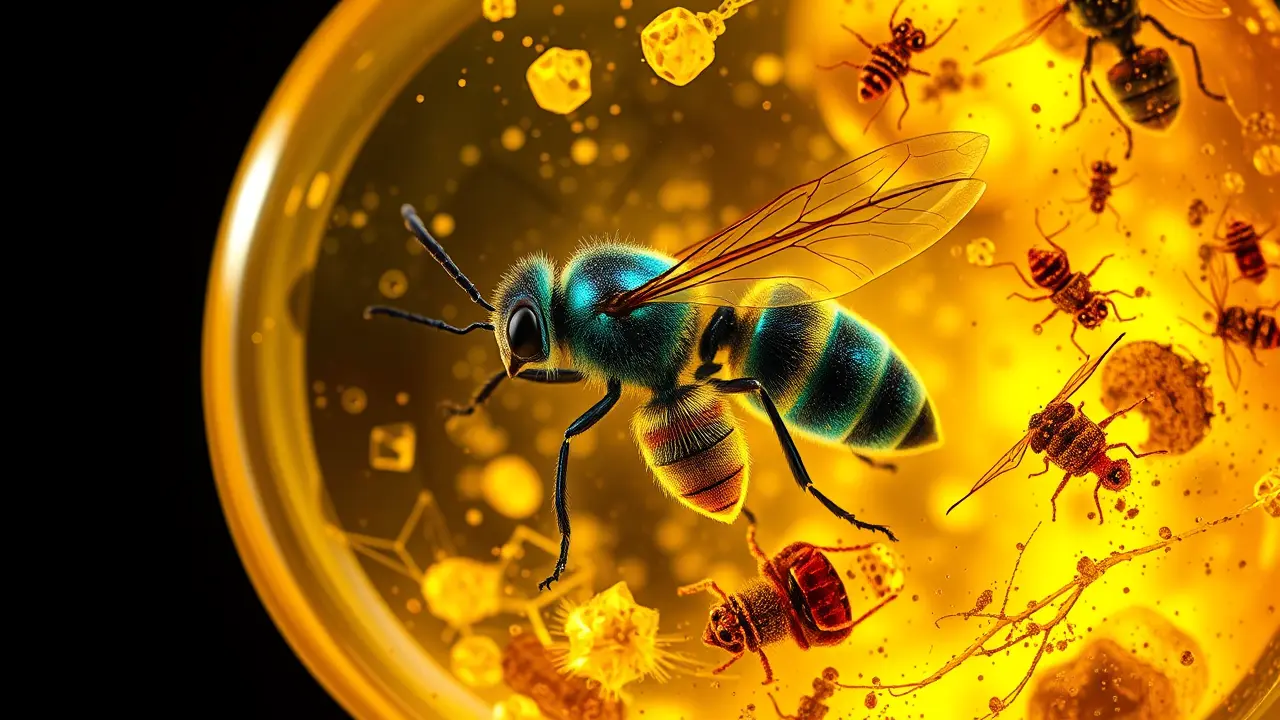Scientists unearth a 112-million-year-old time capsule filled with ancient insects
In a discovery that feels like cracking open a cosmic history book, researchers have struck paleontological gold in an Ecuadorian quarry, unearthing South America's inaugural amber deposits teeming with ancient insects—a dazzling 112-million-year-old time capsule from the supercontinent Gondwana. Imagine a world where Earth's landmasses were huddled together in a colossal embrace; this was the reality of the Early Cretaceous, a period when Gondwana, the southern supercontinent that would eventually fracture into South America, Africa, Australia, and Antarctica, was a vast, interconnected ecosystem.The amber, meticulously extracted from the Hollín Formation, isn't merely fossilized tree resin; it's a perfectly preserved window into a lost world, a humid, resin-rich forest that was so vibrant and teeming with life that its very essence was captured in sticky moments of geological serendipity. The diversity of insect species and delicate plant material suspended within these golden globules is staggering, offering an unprecedented level of detail that traditional fossilization processes, which often crush and compress, simply cannot provide.This is the paleontological equivalent of finding a high-definition video recording from the age of dinosaurs, where one can almost hear the buzz of ancient pollinators and feel the moisture of that primordial jungle. The implications for our understanding of evolutionary biology are profound; by studying the specific morphologies and ecological roles of these trapped arthropods, scientists can begin to map out ancient food webs, track the co-evolution of insects and flowering plants, and understand how life adapted and diversified on a landmass that was on the verge of a planetary-scale breakup.Think of the tectonic forces at play, the slow, inexorable drift that would one day isolate these biological lineages, making this Ecuadorian find a crucial baseline for comparing the evolutionary paths of species across continents that are now separated by vast oceans. It’s a discovery that resonates with the same thrilling sense of exploration as a new Mars rover landing, peeling back layers of our own planet's history with the same precision we use to probe the cosmos.The Hollín Formation site itself is now a focal point for a new wave of scientific inquiry, where geochemists will analyze the amber's composition to reconstruct ancient atmospheres, while entomologists will classify species that may represent long-extinct families, filling critical gaps in the fossil record. This isn't just about cataloging old bugs; it's about rewriting chapters of Earth's biography, understanding the resilience and fragility of ecosystems over deep time, and perhaps even gleaning insights into how life might persist on other worlds. The find underscores a powerful truth: that the most extraordinary discoveries aren't always made by looking up at the stars, but sometimes by looking down, with patient curiosity, at the very ground beneath our feet, where 112 million years of history can be waiting, perfectly preserved in a shimmering drop of golden time.
It’s quiet here...Start the conversation by leaving the first comment.
© 2025 Outpoll Service LTD. All rights reserved.
